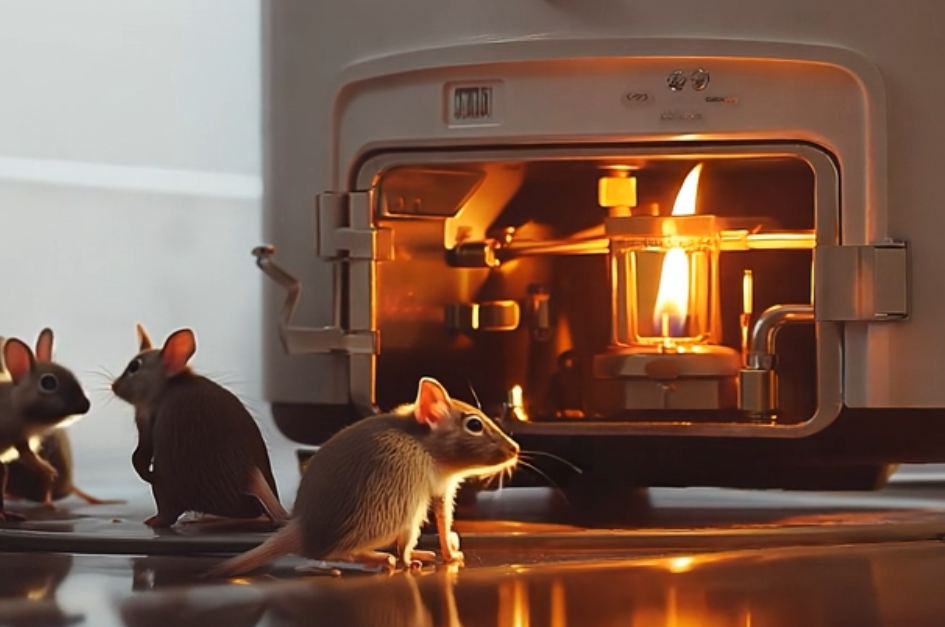What's New At Evans Pest Control
Learn more about Evans Pest Control capabilities
How to Spot a Mouse Problem
If you've ever heard strange scurrying noises at night or found small droppings in hidden corners of your house, you may have a mouse problem. These sneaky rodents can cause damage to your home, contaminate food, and pose health risks. In this DIY guide, we’ll help you identify the signs of a mouse infestation and understand how mice travel within your home and adjacent properties.
Step 1: Identifying the Signs of a Mouse Problem
Mice are nocturnal creatures, which means they are most active at night. While you may not see them often, they leave behind plenty of clues that reveal their presence. Here’s what to look for:
1. Droppings
One of the most obvious signs of a mouse problem is the presence of droppings. Mouse droppings are small, dark, and pellet-shaped, typically about 1/4 inch in length. Look for these in cabinets, drawers, along baseboards, and near food sources like pantries or pet bowls.
2. Gnaw Marks
Mice have strong teeth and love to chew. Check for gnaw marks on food packaging, furniture, electrical wiring, or even wooden baseboards. Fresh gnaw marks will be light in color and rough to the touch, while older ones appear darker.
3. Footprints and Smudge Marks
In dusty or less frequently cleaned areas, you might spot tiny mouse footprints. Additionally, mice often travel along walls, leaving behind greasy smudge marks from the oils in their fur.
4. Nests
Mice build nests from materials like shredded paper, fabric, or insulation. Nests are often hidden in dark, secluded areas like attics, basements, or behind appliances.
5. Strange Noises
If you hear scratching, scurrying, or squeaking sounds coming from your walls, ceilings, or floors—especially at night—you likely have mice moving around your home.
Step 2: Understanding How Mice Travel Within Your Home
Mice are incredibly agile and can squeeze through holes as small as a dime. Once they enter your home, they tend to follow specific paths to search for food, water, and shelter. Here's how to trace their movements:
1. Entry Points
Mice enter homes through cracks in the foundation, gaps around doors or windows, utility pipes, or even through vents. Check the exterior of your home for potential entry points, especially around the foundation, roofline, and garage doors.
2. Common Pathways
Mice are creatures of habit and often use the same paths to navigate your home. They tend to travel along walls, under cabinets, behind appliances, and in attics or basements. Look for droppings, smudge marks, or chewed materials along these paths.
3. Traveling Between Properties
If you live in a shared building or your home is close to others, mice can travel between adjacent properties. They use fences, utility lines, or even underground tunnels to move from one house to another. If your neighbors have a mouse problem, you might too.
Step 3: Tracking Mouse Activity
Once you've identified signs of mice and their possible entry points, you can start tracking their activity to better understand their movements. Here are some DIY tracking techniques:
1. Flour or Powder Trap
Sprinkle a fine layer of flour, baby powder, or baking soda along suspected travel routes (e.g., along baseboards or around entry points). Check back after a few hours or the next morning to see if any footprints appear.
2. Motion-Activated Cameras
Set up motion-activated cameras or smart home devices in areas where you've noticed activity. This will give you insight into where mice are traveling and how frequently they're moving through certain areas.
3. Tracking Pads
You can also place sticky tracking pads in problem areas. These pads won’t necessarily trap the mice, but they will catch their footprints, confirming their presence.
Step 4: Take Action
Once you’ve identified that mice are in your home and have a good idea of their entry points and travel paths, it's time to take action:
Seal Entry Points – Use caulk, steel wool, or metal mesh to seal any cracks, gaps, or holes where mice could enter.
Set Traps – Place mouse traps along travel routes, especially near food sources and entry points.
Remove Food Sources – Store food in airtight containers, clean up crumbs, and secure garbage cans to eliminate easy access to food.
Consider Professional Help – If the infestation seems too large or persistent, it might be time to call Evans pest Control.
Spotting a mouse problem early is key to preventing a full-blown infestation. By knowing what signs to look for and understanding how mice travel through your home, you can take effective steps to rid your property of these unwanted pests. Be sure to watch our accompanying YouTube explainer video for more detailed visuals and tips on how to track and stop mice in their tracks!
Got any questions or tips of your own? Drop a comment below, and let’s get rid of those mice together!
Gallery






Tags:
DIY Mouse Detection,Get a Free Phone Consultation
Having a bug problem? Talk to a professional right now!
Yes, We Can Help
Drop us a message and we will help you today!
